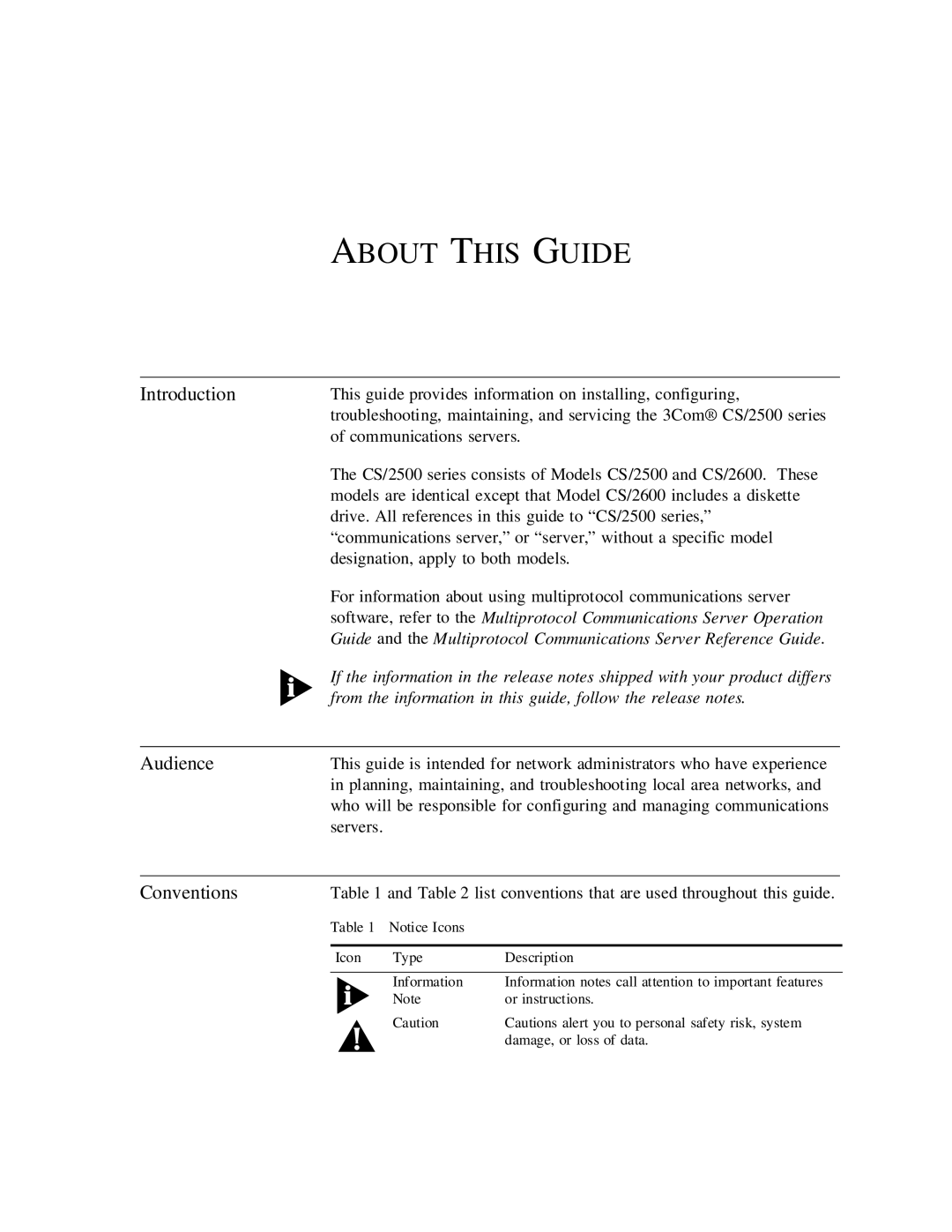
ABOUT THIS GUIDE
Introduction | This guide provides information on installing, configuring, | |||
| troubleshooting, maintaining, and servicing the 3Com® CS/2500 series | |||
| of communications servers. | |||
| The CS/2500 series consists of Models CS/2500 and CS/2600. These | |||
| models are identical except that Model CS/2600 includes a diskette | |||
| drive. All references in this guide to “CS/2500 series,” | |||
| “communications server,” or “server,” without a specific model | |||
| designation, apply to both models. | |||
| For information about using multiprotocol communications server | |||
| software, refer to the Multiprotocol Communications Server Operation | |||
| Guide and the Multiprotocol Communications Server Reference Guide. | |||
| If the information in the release notes shipped with your product differs | |||
| from the information in this guide, follow the release notes. | |||
|
|
| ||
Audience | This guide is intended for network administrators who have experience | |||
| in planning, maintaining, and troubleshooting local area networks, and | |||
| who will be responsible for configuring and managing communications | |||
| servers. |
|
|
|
|
|
| ||
Conventions | Table 1 and Table 2 list conventions that are used throughout this guide. | |||
| Table 1 | Notice Icons |
|
|
|
|
|
|
|
| Icon | Type | Description | |
|
|
|
|
|
|
| Information | Information notes call attention to important features | |
|
| Note | or instructions. | |
|
| Caution | Cautions alert you to personal safety risk, system | |
|
|
| damage, or loss of data. | |
